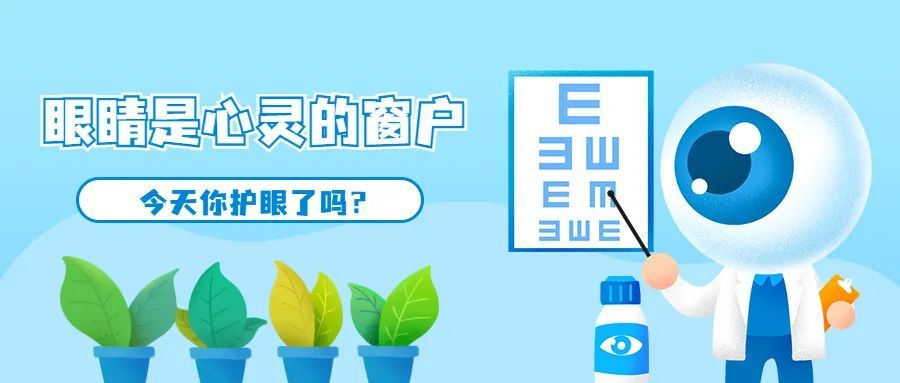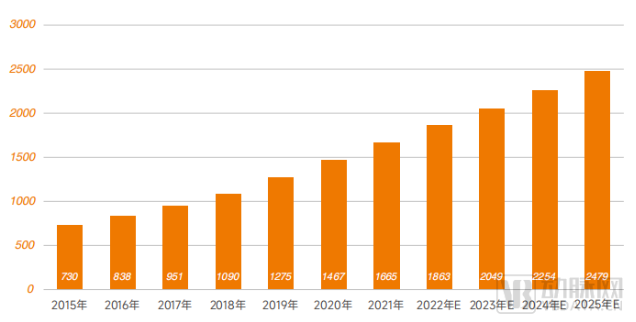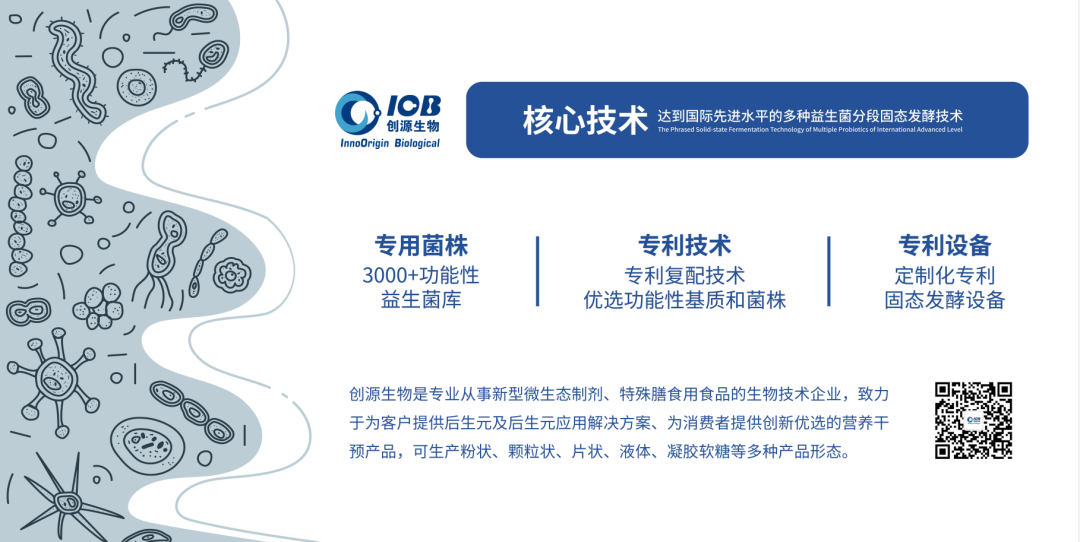- All
- Product Management
- News
- Introduction
- Enterprise outlets
- FAQ
- Enterprise Video
- Enterprise Atlas
Top 10 Popular Ingredients in the 700 Million+ Eye Care Market

According to data from the National Health Commission and the National Bureau of Statistics, in 2022, there were over 700 million patients with refractive errors in China, accounting for nearly 50% of the national population; nearly 360 million patients with dry eye syndrome, accounting for nearly 30% of the national population; and over 220 million patients with cataracts, with an incidence rate of cataracts among the 60-89 age group in China being 80%.[1].
Moreover, as one of the three major causes of blindness globally, age-related macular degeneration is a serious yet often overlooked retinal disease in middle-aged and elderly individuals. Although its proportion in the total population is not high, based on China's large population base, the current number of patients has reached nearly 30 million.[1].
It is evident that during the gradual increase in the prevalence of eye diseases, more than half of the population has already suffered from eye diseases, and the demand for treatment continues to rise. Additionally, the demand for ophthalmic diagnosis and treatment covers all age groups, from children's myopia to elderly retinal diseases, spanning the entire human life cycle.

According to the China Health Statistics Yearbook, in 2021, the number of inpatient visits to ophthalmology specialty hospitals in China reached 2.374 million (data for 2022 has not yet been released), with a compound annual growth rate (CAGR) of 15.35% over the past decade, gradually forming a demand blue ocean. According to Frost & Sullivan data, based on the market growth rate from 2015 to 2019 (CAGR=15%), with a 10% compound growth rate, it is expected to reach 247.9 billion yuan by 2025, indicating a broad growth space.

It is worth noting that under the trend of population aging and excessive use of electronic screens in China, the number of people suffering from eye diseases will continue to increase. This article reviews the popular eye care ingredients currently attracting consumer attention!
Top 10 Popular Ingredients
Lutein and zeaxanthin, as the main forces in the eye health market, have a wide range of product applications and market recognition. According to Innova data reports, the compound annual growth rate (CAGR) of new product launches based on lutein and zeaxanthin is 25% and 18%, respectively. According to SPINS data, as of November 4, 2018 (within 52 weeks), sales of lutein in the eye health category (traditional multi-channel in the U.S.) grew more than other eye health ingredients in that channel, with sales increasing by 38.8% compared to the same period in 2017, reaching 52 million USD.
A report from Florida International University states that taking lutein dietary supplements (2.4 mg per person per day) increased the lutein content in the blood by 130% after 6 months, and the lutein density in the macular region of the subjects' eyes also increased by 14%. If the daily intake is increased to 30 mg, after 5 months, the lutein content in the subjects' retinal macular region increased by 20% to 40%. The report points out that the increase in lutein content in the blood can reduce the risk of age-related macular degeneration.[2]. Lutein and zeaxanthin are two carotenoids present in the retinal macular region, and the lutein and zeaxanthin obtained from the diet can affect macular pigment density, preventing age-related macular degeneration (AMD).[3].
Lutein esters are a form of lutein combined with fatty acids, serving as a natural source of lutein. After entering the human body, lutein esters are hydrolyzed into free lutein. During food processing, storage, and consumption, lutein esters have better stability against light and heat compared to free lutein.
In 2000, Tos Berendschot used lutein esters for dietary supplementation, which increased the lutein level in human plasma and increased the lutein density in the macular center by 20%, indicating that lutein esters can also achieve supplementation effects.[2].
Made primarily from European bilberries, extracted and purified, rich in active substances such as anthocyanins. The anthocyanins in bilberries have eye-protective functions. For patients with symptoms of visual fatigue, mostly around 40 years old and engaged in high-intensity screen use, symptoms of visual fatigue were significantly alleviated after trying European bilberry extract. For adolescents in the developmental stage, short-term use can significantly improve vision levels by alleviating pseudomyopia or mild myopia caused by visual fatigue.[4].
Blueberry anthocyanins (BA) benefit vision by improving diabetic retinopathy, age-related macular degeneration, and night vision. BA extract reduces the levels of reactive oxygen species and malondialdehyde in human retinal pigment epithelial cells, while increasing the levels of superoxide dismutase, catalase, and glutathione peroxidase to alleviate H₂O₂-induced oxidative stress. Additionally, anthocyanins lower the levels of vascular endothelial growth factor and activate the Akt signaling pathway. These comprehensive results support the hypothesis that blueberry anthocyanins can inhibit the induction and progression of age-related macular degeneration (AMD) through antioxidant mechanisms.[5].
A ketone-type carotenoid that is fat-soluble. Naturally produced by Haematococcus pluvialis and yeast. Astaxanthin is currently known as the only ketone-type carotenoid that can cross the blood-brain barrier, capable of preventing oxidative damage to the retina and photoreceptor cells.[6].
Research by Otzuka et al. found that astaxanthin at a concentration of 100 mg/kg can inhibit retinal dysfunction assessed by electroretinography (ERG) and outer nuclear layer (ONL) thickness in a light-induced retinal injury mouse model. Additionally, by reducing the level of 8-hydroxydeoxyguanosine (8-OHdG), it can simultaneously reduce cellular oxidative stress.[7].
Coenzyme Q10, also known as ubiquinone, is a vitamin-like substance that is a fat-soluble molecule with strong antioxidant properties. Clinical studies indicate that increasing age leads to a decrease in coenzyme Q10 in the retina, and this decrease is associated with a decline in the retina's antioxidant capacity, resulting in reduced ATP synthesis in the retina. Therefore, the decline of coenzyme Q10 is linked to the onset and progression of age-related macular degeneration.[8].
A fat-soluble carotenoid found in tomatoes and other red fruits and vegetables, it has antioxidant properties. Unlike other carotenoids, lycopene does not promote the production of vitamin A in the body. The antioxidant characteristics of lycopene can eliminate free radicals, thereby preventing oxidative damage to the eyes.[6]In the bloodstream, lycopene protects lutein from oxidation, thereby supporting its delivery to the eyes.
Cardinault et al. studied the carotenoid levels in the serum and lipoproteins of 34 AMD patients and 21 normal individuals.[9]The results showed that the lycopene levels in AMD patients were lower, while the levels of other carotenoids remained unchanged, suggesting that lycopene has a protective effect on the macula similar to that of lutein and zeaxanthin.
Vitamin A is a component of the photosensitive substances in visual cells. Vitamin A and proteins can maintain the regeneration of rhodopsin. Rhodopsin can sense weak light; if its synthesis is insufficient, it can cause difficulty in distinguishing objects in low light or require a longer time to see clearly, leading to night blindness.
The growth and development of the human body require various nutrients, and docosahexaenoic acid (DHA) is an essential polyunsaturated fatty acid, belonging to the ω-3 polyunsaturated fatty acid (PUFA) category, with a molecular weight of 328.49.[10]DHA is highly concentrated in the brain and other neuronal tissues, including the retina, while shorter-chain ω-3 PUFAs like EPA are almost nonexistent.[11]Currently, products containing DHA on the market generally include extracts from algae, deep-sea fish, krill oil, and plant extracts such as flaxseed and nuts.
Chrysanthemum and goji berries are both medicinal and edible herbs. The "Compendium of Materia Medica Supplement" records chrysanthemum as: "Yellow tea chrysanthemum, brightening the eyes and dispelling wind," which has the effects of clearing the liver and brightening the eyes, as well as clearing heat and detoxifying. The "Compendium of Materia Medica" records goji berries as: "Nourishing the kidneys, moistening the lungs, and brightening the eyes," which has the effects of nourishing the liver and kidneys, benefiting essence, and brightening the eyes.[12].
Dried leaves of the mulberry plant (Morus alba L.). They have the effects of dispersing wind-heat, clearing the lungs and moistening dryness, calming liver yang, and brightening the eyes. Mulberry leaves are often used in combination with chrysanthemum in traditional Chinese medicine to alleviate problems such as red eyes, dryness, pain, and excessive tearing caused by wind-heat attacking upward and liver fire inflaming upward.[12].
Dried stems of the orchid plant Dendrobium officinale Kimura et Migo. The stems contain polysaccharides, alkaloids such as dendrobine and dendrobine, and phenolic compounds, which have antioxidant properties and can relieve dry eyes, fatigue, and photophobia through internal consumption and external application.[13]It can stabilize the tear film, stimulate the contraction of epithelial cells in the eye muscles, and increase tear secretion, alleviating dry eyes.
Source: Food Function Circle, reprint authorization obtained (Article excerpted from popular science literature, not for any medical guidance)

Previous Page
Related News


